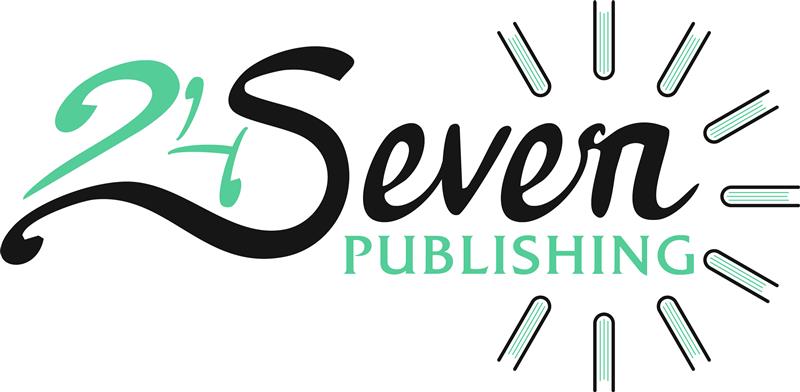Few novels have endured with such cultural impact and stylistic brilliance as F. Scott Fitzgerald’s 1925 masterpiece, The Great Gatsby. This slim volume, brimming with poetic prose, incisive social commentary, and enduring symbolism, remains a touchstone in American literature. For writers and readers alike, Gatsby is more than a story of love and disillusionment—it’s a study in style, subtext, and storytelling excellence.
At 24 Seven Publishing, we understand how timeless classics influence modern writing. That’s why our literary editing services focus not just on grammar or pacing but on elevating your manuscript’s voice, theme, and stylistic integrity—just like Gatsby’s. So, what makes this novel such an artistic triumph? Let’s explore its narrative flair and literary legacy.
Fitzgerald’s Distinctive Writing Style
-
Lyrical Prose
Fitzgerald was a master of poetic language. His sentences often read like verse, with rhythm and resonance that make them quotable decades later. Consider the famous line:
“So we beat on, boats against the current, borne back ceaselessly into the past.”
It’s a perfect example of how literary cadence enhances emotional impact.
Through book content editing, aspiring authors can learn to refine their language without losing their voice. It’s about clarity and elegance—Fitzgerald mastered both.
-
Symbolism and Imagery
From the green light at the end of Daisy’s dock to the faded eyes of Dr. T. J. Eckleburg, Gatsby is rich in metaphor. These symbols aren’t just decorative; they deepen the novel’s themes of longing, illusion, and moral decay.
If you’re a writer looking to weave symbolism into your own manuscript, our creative writing services can help guide the process, balancing subtlety with significance.
-
First-Person Peripheral Narration
Fitzgerald chose Nick Carraway, a relatively passive observer, as the narrator. This stylistic choice created emotional distance, allowing readers to interpret Gatsby through layers of perception, bias, and contradiction.
Using an indirect narrator adds complexity—and it’s a narrative tool still relevant for modern writers. It’s a technique worth exploring in ghostwriting for fiction, especially when writing character-driven drama.
Thematic Depth: What Gatsby Really Tells Us
-
The Illusion of the American Dream
Gatsby’s wealth, parties, and reinvention from James Gatz to Jay Gatsby embody the American Dream—but with a tragic twist. The dream is hollow. Gatsby gains riches but not fulfillment, success, or true belonging.
This nuanced critique is why Gatsby remains a relevant case study in book content editing workshops. It teaches writers to infuse the plot with layered social commentary.
-
Love and Obsession
What begins as romantic idealism between Gatsby and Daisy evolves into obsession. Fitzgerald critiques not just personal fixation but the broader societal emphasis on wealth as a vehicle for emotional satisfaction.
His portrayal of broken love is timeless—and a reminder that in fiction, relationships should reflect internal conflicts as well as external stakes.
-
Class and Identity
The stark division between old money (Daisy, Tom), new money (Gatsby), and the working class (George and Myrtle) underscores the rigid social hierarchy of the Jazz Age.
These dynamics offer rich material for writers exploring social inequality. In our literary editing services, we help authors develop subtext and character tension from such contrasts.
The Legacy of Gatsby’s Characters
Jay Gatsby: The Enigma
Gatsby is charismatic, mysterious, and deeply flawed. He embodies hope and tragedy in equal measure. Readers sympathize with his dream, even as they question his methods.
For authors, Gatsby demonstrates the power of creating morally ambiguous characters—something often explored in ghostwriting for fiction projects that aim for complexity.
Daisy Buchanan: More Than a Muse
Daisy is often misunderstood. She’s fragile, yes, but also manipulative and emblematic of a society that prizes appearances over authenticity.
Writing female characters with depth—who both attract and repel—is a mark of literary maturity. It’s a balance many authors aim to perfect through book content editing.
Nick Carraway: The Watcher
Nick doesn’t drive the plot, but he anchors it. His quiet disapproval, inner conflict, and passive judgment shape the narrative tone. He’s a storyteller struggling with truth.
For writers crafting similar reflective narrators, creative writing services can refine internal monologues and narrative reliability.
Why The Great Gatsby Still Matters
-
Timeless Style
From Fitzgerald’s rhythmic prose to his layered symbols, Gatsby proves that literary technique never goes out of fashion.
-
Universal Themes
Ambition, class, disillusionment, unrequited love—these aren’t just 1920s issues. They’re eternal struggles that continue to resonate with readers.
-
Cultural Endurance
Adaptations, references in pop culture, and critical acclaim have kept Gatsby alive in public consciousness. It’s a novel that’s taught, quoted, and beloved across generations.
As a publishing house that offers literary editing services, we encourage authors to study Gatsby not as a relic but as a blueprint. Its craft, characters, and clarity are instructive for every stage of writing.
What Modern Writers Can Learn from Fitzgerald
-
Start with Voice
Voice is more than word choice—it’s cadence, worldview, and subtle attitude. Gatsby teaches that voice, more than plot, hooks readers.
-
Show, Don’t Tell
Fitzgerald rarely explains emotions. Instead, he shows them through gestures, metaphors, and scenery. It’s something writers hone through writing coaching and editorial assessment.
-
Embrace Revision
Gatsby was not Fitzgerald’s first draft. He reworked it heavily, even under deadline pressure. Rewriting is not failure—it’s mastery.
Conclusion
Nearly a century later, The Great Gatsby continues to inspire, enchant, and challenge readers. Its enduring legacy is not just in its beautiful prose but in its emotional precision and narrative finesse.
At 24 Seven Publishing, we help authors find their own literary voice, whether through ghostwriting for fiction, creative writing services, or book content editing. Gatsby reminds us that the best fiction isn’t just read—it’s felt.
Whether you’re chasing your own green light or guiding characters through the ruins of their ambition, remember: great literature begins with a clear, compelling vision—and the dedication to bring it to life.

